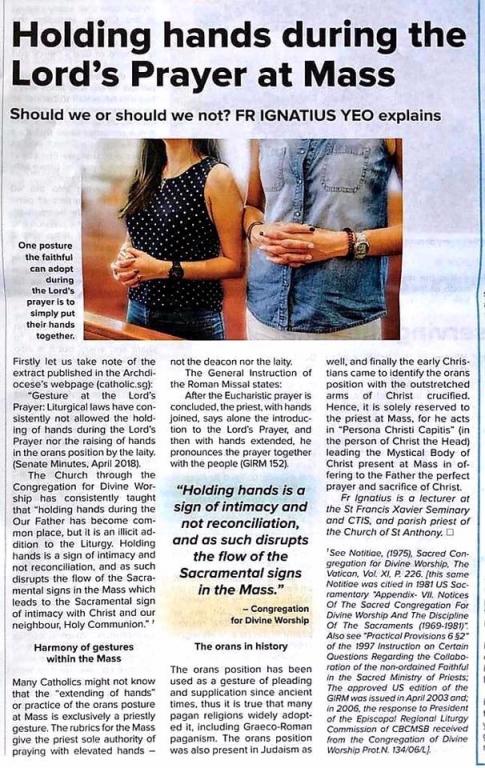“Liturgical abuse” can be, and sometimes become, normalized. The history of the development of liturgical tradition is filled with such abuse, and many of them have become so normalized in the West, people do not understand how controversial such practices were when they were first enacted (in a part, and not the whole, of the Western Church). Perhaps one of the most important examples is that of the filioque.
Certainly one must understand the controversy surrounding the filioque contains many different elements. First, there was the question as to how one was to interpret the meaning of the filioque itself. Now, because it can be given an orthodox meaning, I do not think the word itself is problematic as long as that orthodox interpretation is provided. The lack of charity by some in the East, forcing upon the filioque a heretical interpretation, must be dealt with by pointing out that their forced interpretation is not the meaning the West gives to the filioque. St Augustine, for example, said the filioque was a gift to the Son by the Father, indicating the monarchy of the Father does not have to be denied because of the filioque. Nonetheless, the lack of charity used in interpreting the filioque is important because it is this kind of mentality which continues in other liturgical debates. Those who do not like certain practices, new or old, often try to give them the worst possible meaning and use that to justify contempt. Instead, it is better to look for the most charitable interpretation of such practices and to engage them in that fashion; a practice might not be to our liking, it might be possible to interpret it in a bad light, but this is not to mean it is how it is meant to be interpreted. Communion in the hand, standing at the consecration, or having a priest facing away from the congregation — all of them have had people argue in bad faith against such practices, and each time, the interpretation, while possible, is not the one which is given by those who engage these practices. Thus, for the last of these, having a priest facing away from the congregation is not having a priest somehow rudely turning his back on the people, rather it is an attempt to put himself as an equal to the congregation, to unite himself with them as they face God together.
The main problem with the filioque was that its insertion into the creed went against the canons of ecumenical councils and papal decrees, and it was being used and spread in the liturgy despite official condemnation of such practices. It clearly started as a “liturgical abuse.” However, we can look at what this means in one of two ways. Either we can use the fact that it started out as an abuse as a way to discount the practice. Those who are liturgical purists should go this route; the arguments they offer against other liturgical practices find greater support with a rejection of the filioque than, say, communion in the hand. Yet, strangely enough, they don’t follow through here, showing that they can and do accept our second position: liturgical innovation, even if abnormal and against the norm, can nonetheless be authorized in locality, and be a movement of the Spirit to help in the building of the Church. As long as an act and practice is not intrinsically contrary to the liturgy (and any practice which has been sanctioned by apostolic tradition cannot be said to be this), and as long as a local ordinary has given some sort of assent (even if dispensation), then the questionable position of such practice does not mean it cannot be started at the direction of the Spirit for the improvement of the Church. What was said in the Acts of the Apostles about Christians — that if it is of God, they will thrive, fits this kind of situation well. That the filioque spread — like wildfire– in the West confirms its authentic status, and in doing so, confirms why absolute liturgical purists might be interested in following the letter, but clearly lack the guidance of the Spirit, and end up bringing the Church and those who follow them into a spiritual dead end. When we ignore the Spirit and its prompting, a prompting which guides us according to the needs of our time and place, we have turned our back on the Spirit of Life. This shows that liturgical literalism, without an ability to accept the Spirit’s blowing as it wills, is like any other literalism: a knife that kills. Obviously, not every innovation is good or necessary; but such practices will also come to a dead end and perish, because they will have none of the Spirit of life which is needed for them to continue beyond a given generation.












